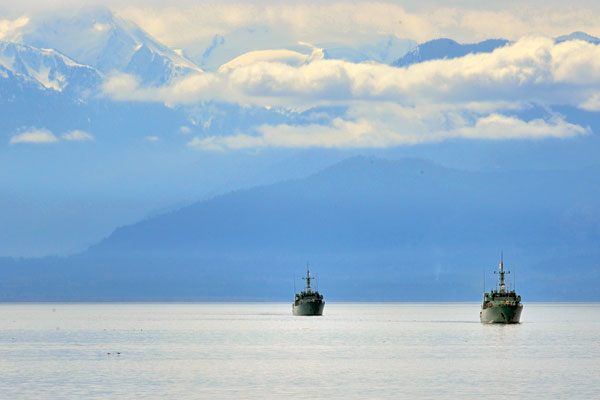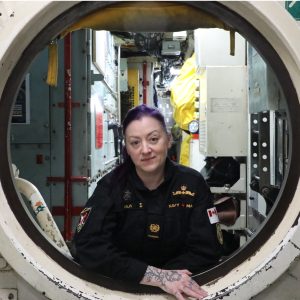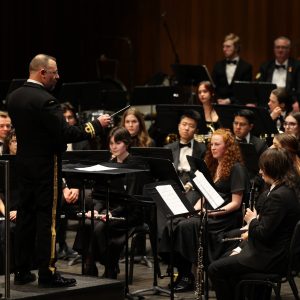Reservist Cadet Instructor makes Orca certification history
[caption id="attachment_7031" align="alignnone" width="300"] Lt(N) Ellen Delong has made her mark in the history books by becoming the first female officer in charge of an Orca training vessel.[/caption] A personal and professional milestone was achieved earlier this month when Lt(N) Ellen Delong from the Cadet Instructor Cadre (CIC) completed her tender charge check ride, certifying her to act as Officer in Charge (OIC) of Orca training vessels. This certification makes her the first woman from CIC to receive this qualification. “It’s interesting to think I made a bit of history,” she says. “We’re at a point where women commanding vessels and making milestones isn’t an uncommon thing; but being the first female reservist from CIC to do it is pretty cool.” The certification is the last requirement in a long line of qualifications, which has included tests, training, and at-sea exercises spread out over the past six years. She began the process in 2008, but things were put on hold for two years while she focused on her family. “For some reason they don’t let you go to sea when you’re pregnant,” she says, laughing. “I had to take a break to raise my child; so getting back on the water felt really good.” For the check ride portion Lt(N) Delong set out on a fully-crewed Orca with Cdr Lorne Carruth, Commander Coastal Division, riding shotgun. As her boss, Cdr Carruth acted as judge and jury that day, analysing Lt(N) Delong’s performance. “He was very supportive and really helped me feel at ease,” she says. “I was a little on edge, it being my first shot at something I’d worked very hard for over the years.” Performing manoeuvres, coming alongside, and docking were just some of the things she had to walk her crew through. “The reverse docking is stressful. It’s a much more finicky kind of docking, but I think I handled it well,” she says. “Everyone one of the crew worked so well together, it was a thrill...





























